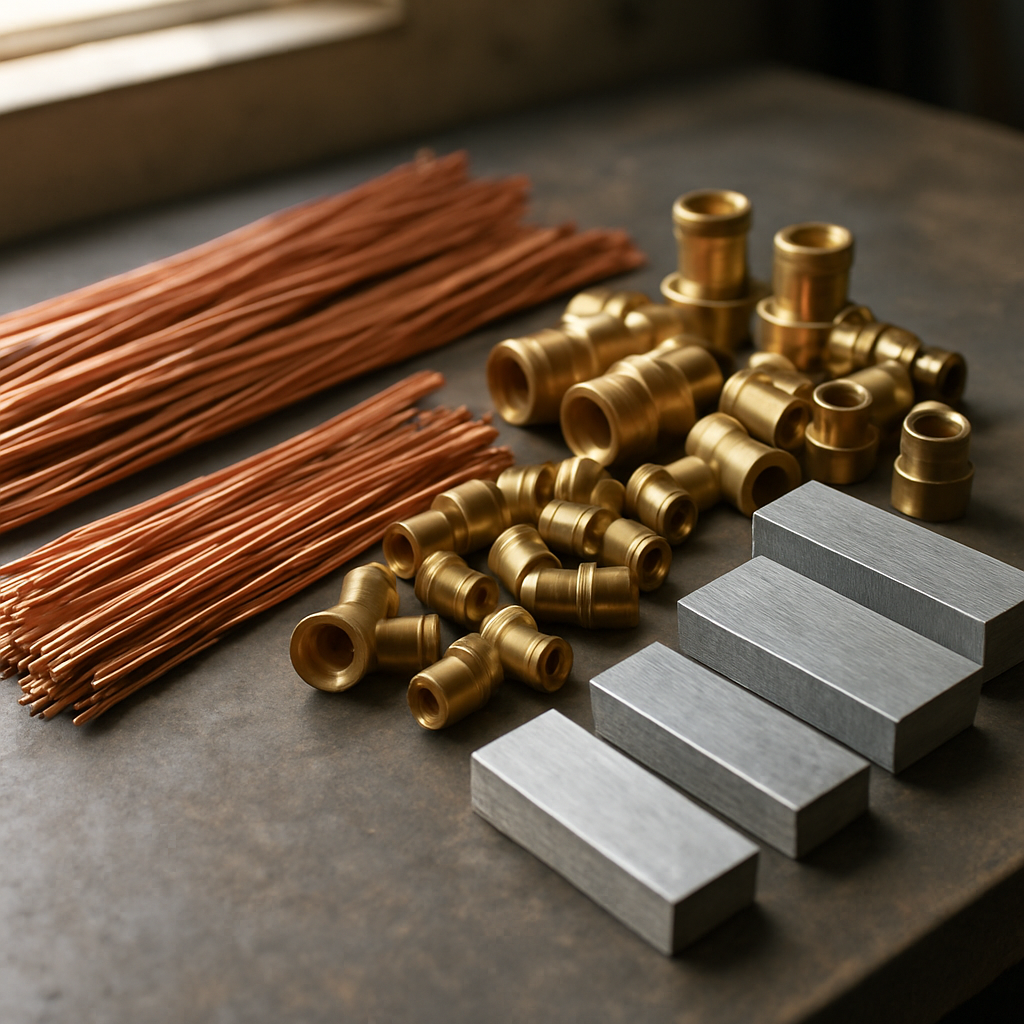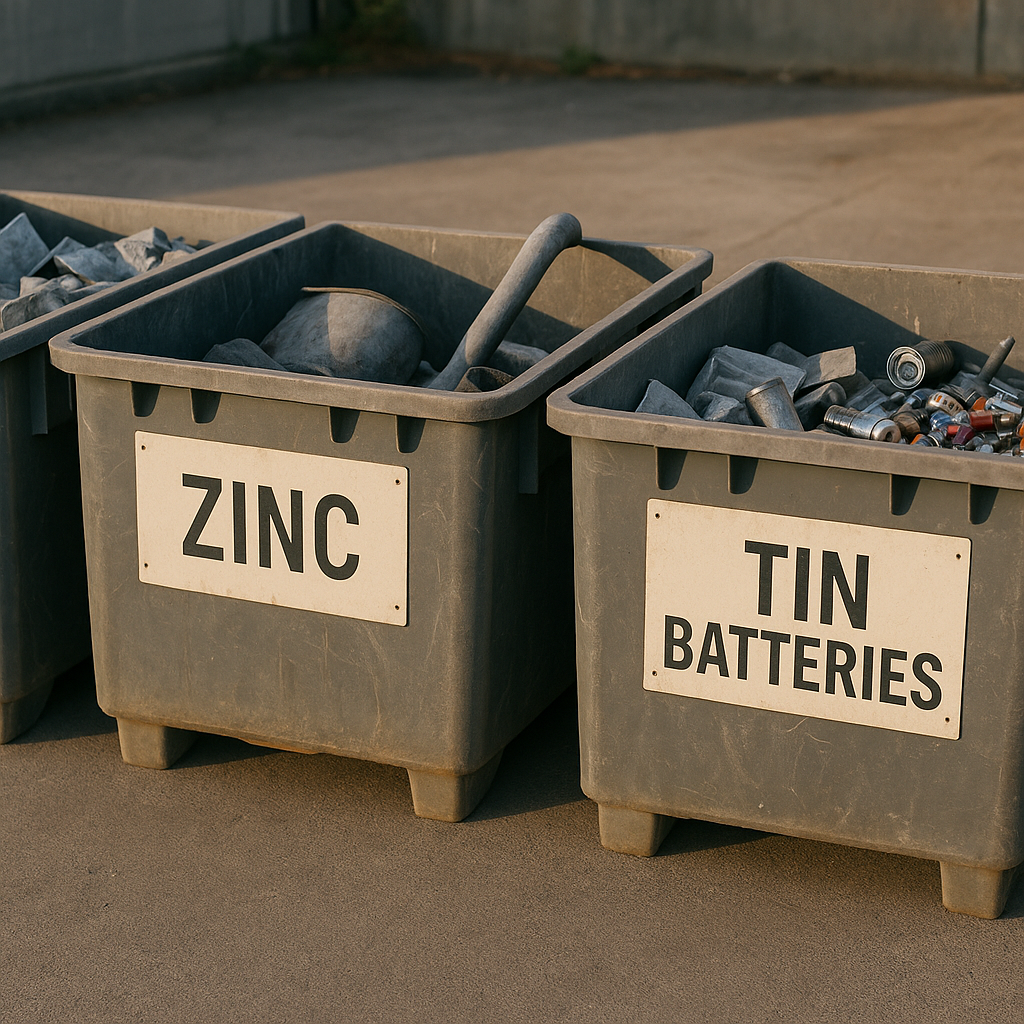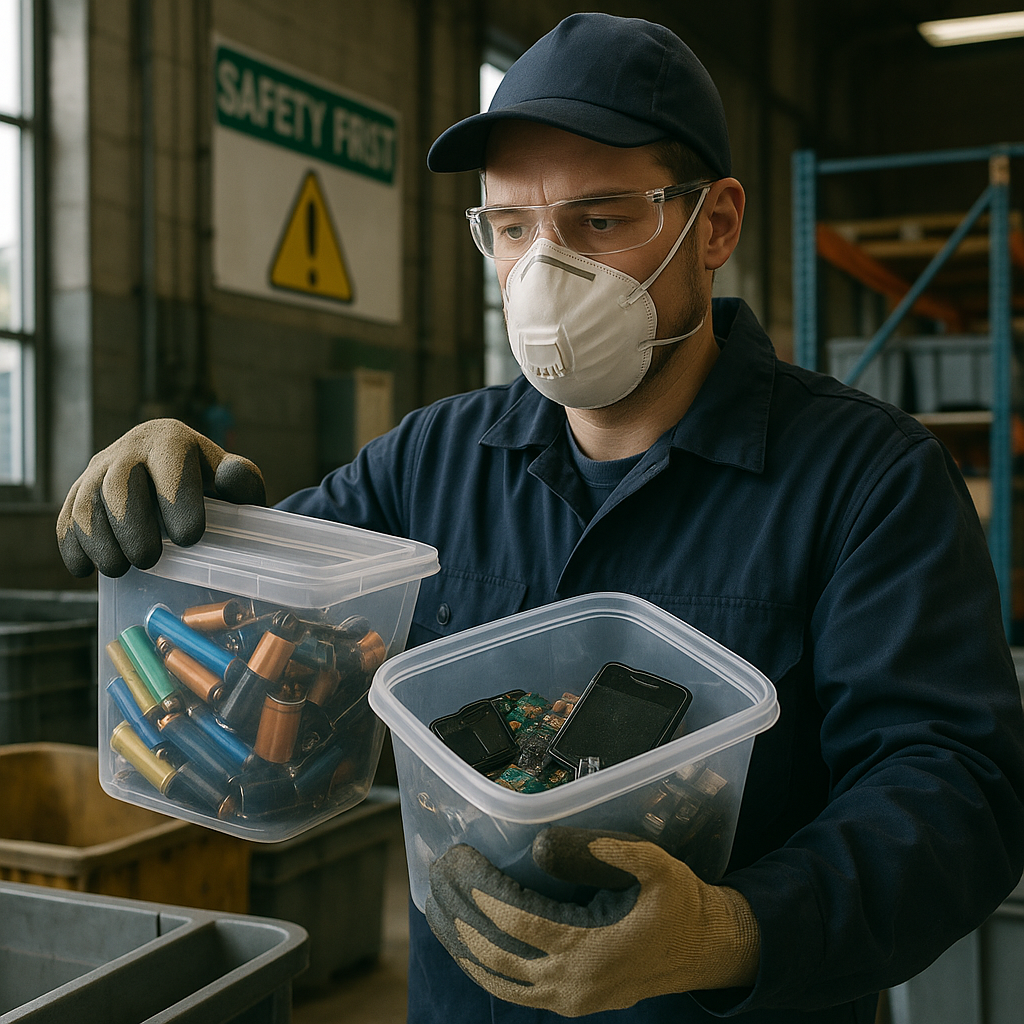5901 Botham Jean Blvd, Dallas, TX 75215
Best Metals to Recycle for Cash: A Guide to High-Value Scrap
November 5, 2025The global scrap metal recycling market is projected to reach $77 billion by 2028, reflecting the increasing recognition of metal recycling’s dual benefits. Organizations can reduce their environmental footprint while generating revenue from materials that might otherwise end up in landfills. This financial incentive makes waste management recycling programs more sustainable and cost-effective for businesses and municipalities alike.
Understanding which metals offer the highest return on investment helps organizations prioritize their resource conservation efforts. Steel, aluminum, and copper are the most commonly recycled metals, each offering different environmental benefits and market values. Steel recycling can save up to 60% of the energy required for virgin production, while aluminum recycling achieves an impressive 95% energy savings compared to primary extraction methods.
The circular economy principles driving modern sustainability initiatives depend on identifying valuable recyclable materials. Ferrous metals and non-ferrous metals each play distinct roles in waste management strategies, with certain materials commanding higher market prices due to their scarcity or processing requirements. By focusing collection efforts on the most valuable metals to recycle, organizations can maximize both their environmental impact and their program’s financial viability.
What Are The Most Common Ferrous Metals For Recycling?
Ferrous metals contain iron and possess magnetic properties that make them easily identifiable and separable from mixed waste streams. Steel and iron dominate the ferrous recycling market due to their widespread use and their endless recyclability.
Steel is the most recycled metal worldwide. In 2017 alone, ferrous scrap processed in the U.S. was valued at $15.9 billion, highlighting steel’s significant presence in the recycling market. This metal can be recycled repeatedly without losing its structural integrity or strength.
The durability factor distinguishes steel from other recyclable materials. Unlike paper fibers that degrade after several recycling cycles, steel maintains its original properties through endless recycling processes. This characteristic makes steel incredibly valuable for sustainable manufacturing.
Iron as a Primary Ferrous Metal
Iron is the second most common ferrous metal in recycling operations. As the primary component of steel, iron shares many recycling characteristics with its counterpart. Its magnetic nature allows for efficient separation using magnetic sorting equipment in materials recovery facilities.
Iron recycling significantly contributes to resource conservation. Processing facilities recover iron from various obsolete sources, including industrial equipment, construction materials, and transportation infrastructure. The magnetic separation process enables quick identification and sorting of iron-containing materials from mixed waste streams.
Common Sources of Ferrous Metals
Most obsolete ferrous scrap originates from consistent sources. Automotive recycling provides the largest volume, with vehicles containing substantial amounts of both steel and iron components. The recycling rate for cars approaches 100 percent, making this sector highly efficient.
Construction and demolition projects generate significant ferrous material volumes. Steel beams, reinforcement bars, and structural components from building renovations enter recycling streams regularly. These materials maintain their recycling value due to steel’s durability and reprocessing capabilities.
Industrial and manufacturing sources account for approximately half of recovered ferrous scrap. This scrap comes from production processes, machinery upgrades, and equipment replacements. Railroad tracks, ships, and farm equipment also contribute substantial quantities to recycling operations.
Applications for Recycled Ferrous Metals
Recycled steel and iron find extensive applications across multiple industries. Construction projects utilize recycled steel for structural frameworks, reinforcement materials, and building components. The construction industry recycles nearly 98 percent of structural steel, demonstrating strong circular economy practices.
Automotive manufacturing heavily relies on recycled ferrous metals for vehicle production. Steel recycling supports automotive parts manufacturing while reducing energy consumption compared to virgin material processing. Food packaging is another major application, with steel cans achieving a 70.9 percent recycling rate in 2018.
The packaging industry benefits from steel’s protective properties and recyclability. Steel containers maintain product integrity while supporting sustainable packaging goals. Manufacturing operations incorporate recycled ferrous metals into appliances, tools, and industrial equipment, completing the circular material flow.
Which Non-Ferrous Metals Have the Highest Value?

Copper consistently ranks as the most valuable common scrap metal for recyclers. Current market rates for copper range from $2.40 to $3.70 per pound, with bare bright copper wire commanding premium prices at the high end of this range. The metal’s exceptional value stems from its unique properties and widespread industrial applications.
Copper’s recyclability is particularly attractive because it retains its properties indefinitely through multiple recycling cycles. Recycled copper maintains up to 90% of its original value, making it one of the most sustainable materials in the circular economy. This durability drives consistent demand from manufacturers who rely on recycled copper for new production.
Electrical wiring is the most common source of recyclable copper in commercial and residential settings. Its superior conductivity makes copper irreplaceable in power transmission applications. HVAC systems, plumbing installations, and appliances also contain significant copper components, maintaining high scrap value during renovations or demolitions.
Brass: A Valuable Copper Alloy
Brass commands substantial recycling value, typically ranging from $1.25 to $2.20 per pound depending on grade and purity. This copper and zinc alloy is about half as valuable as pure copper, yet significantly more valuable than most other scrap metals. Its distinctive golden appearance makes brass easily identifiable during sorting operations.
Plumbing fixtures provide the primary source of brass in recycling streams. Faucets, valves, pipe fittings, and water meters contain brass components that accumulate substantial value over time. Musical instruments, decorative hardware, and marine equipment also contribute brass to commercial recycling operations.
The recycling process for brass requires careful separation from other materials. Clean brass, without iron contamination or attachments, receives top pricing at scrap yards. Mixed brass with contaminants typically falls into lower pricing categories, emphasizing the importance of proper sorting during collection.
Bronze: Premium Copper Alloy Recovery
Bronze, an alloy of copper and tin, consistently outperforms standard plumbing brass in scrap value. This premium copper alloy appears in specialized applications, including marine hardware, industrial bearings, and architectural elements. Its tin content provides corrosion resistance that makes bronze particularly valuable for harsh environments.
Recovery sources for bronze include pump components, valve bodies, and specialty plumbing materials. Industrial machinery often contains bronze bushings and bearings that accumulate significant value during equipment decommissioning. Architectural bronze elements from older buildings represent another valuable recovery stream during demolition projects.
Processing facilities evaluate bronze based on tin content and overall purity. Higher tin percentages typically correlate with increased scrap value. However, proper identification requires experience since bronze can appear similar to other copper alloys without careful examination.
Market conditions influence the relative values of these copper-based materials. Global demand for electrical infrastructure and renewable energy systems continues to drive copper prices upward. Brass maintains steady demand from plumbing and hardware manufacturers. Bronze serves niche markets with specialized applications that support consistent pricing.
What other non-ferrous metals are widely recycled?

Aluminum is the second most recycled metal globally. Its infinite recyclability means it maintains its structural integrity through endless recycling cycles. Recycling aluminum saves up to 95% of the energy required for primary production.
Common aluminum sources include beverage cans, window frames, and automotive components. The metal’s lightweight properties and corrosion resistance make it valuable in construction, transportation, and packaging. Processing facilities can transform recycled aluminum into new products within 60 days.
Zinc Recycling Applications
Zinc recycling provides about 30% of global zinc supply. The metal is mainly used in galvanizing, creating protective coatings on iron and steel to prevent corrosion. This process extends the lifespan of materials in construction and manufacturing.
Secondary zinc production uses 76% less energy than mining and processing virgin ore. Industrial facilities produce substantial zinc scrap through galvanizing operations and die-casting processes. The material’s low melting point facilitates efficient recovery and reprocessing.
Tin and Other Recovery Streams
Tin recycling focuses on protective coatings found on food cans and electronic components. The metal’s corrosion resistance is crucial for food packaging safety. Modern sorting technologies efficiently separate tin-coated materials from mixed waste streams.
Lead recycling achieves high recovery rates, especially from automotive batteries with 99.3% recycling efficiency. Nickel recovery from batteries and industrial alloys supports growing energy storage demands. Brass and bronze recycling leverages their copper content, with brass containing 60-88% copper depending on the alloy.
These non-ferrous metals create valuable revenue streams for waste management operations. Their higher per-pound values compared to ferrous materials make proper sorting economically beneficial. Advanced processing facilities can maximize recovery rates while meeting environmental compliance standards.
Are Toxic Or Heavy Metals Also Recyclable?

Toxic and heavy metals present an intriguing paradox in recycling. Despite their hazardous nature, many of these materials achieve some of the highest recycling rates. Lead is a prime example of this contradiction.
Lead recycling demonstrates how toxic materials can become sustainability success stories. This soft, malleable metal offers exceptional corrosion resistance, making it invaluable for batteries, power cables, and construction materials. The metal’s durability and recyclability have created a circular economy that minimizes waste while meeting industrial demand.
Lead-acid batteries are the pinnacle of metal recycling programs. These batteries achieve a remarkable 99.3% recycling rate, making them the most recycled consumer product in the United States. This success stems from established collection networks and the economic value of recovered lead. Battery manufacturers rely heavily on recycled content, with secondary lead smelters processing millions of spent batteries annually.
Other toxic heavy metals also enter recycling streams through specialized processes. Mercury recovery from industrial waste streams and contaminated materials requires advanced separation technologies. Cadmium, despite its toxicity, is recovered from electronic waste and industrial applications. Chromium, nickel, and other regulated heavy metals undergo similar recovery processes in specialized facilities.
The recycling process for toxic metals demands rigorous safety protocols and specialized equipment. Workers must use protective gear and follow strict handling procedures. Facilities processing these materials require specialized permits and environmental monitoring systems. The separation and purification processes often involve high-temperature smelting and chemical treatments that can only be performed in licensed facilities.
Professional recycling operations have developed sophisticated methods for managing toxic metal contamination risks. These facilities use sealed processing systems, air filtration technology, and waste treatment capabilities that prevent environmental release. The recovered metals often achieve purity levels suitable for manufacturing new products, completing the circular economy loop while protecting public health and environmental safety.
Conclusion: Making the Most of Your Scrap Metal

Scrap metal recycling transforms waste into valuable resources, delivering substantial environmental and economic benefits. Materials like steel, aluminum, and copper can be recycled indefinitely without quality degradation, supporting the circular economy and conserving energy. This process reduces greenhouse gas emissions by up to 500 million tons annually and creates numerous employment opportunities in collection, processing, and distribution.
Starting is straightforward: use a magnet to separate ferrous metals, such as steel and iron, from valuable non-ferrous metals like copper, aluminum, and brass. Local scrap yards offer immediate cash payments while ensuring proper material recovery. For organizations seeking comprehensive recycling solutions to maximize environmental impact and economic returns, contact Okon Recycling at 214-717-4083.
